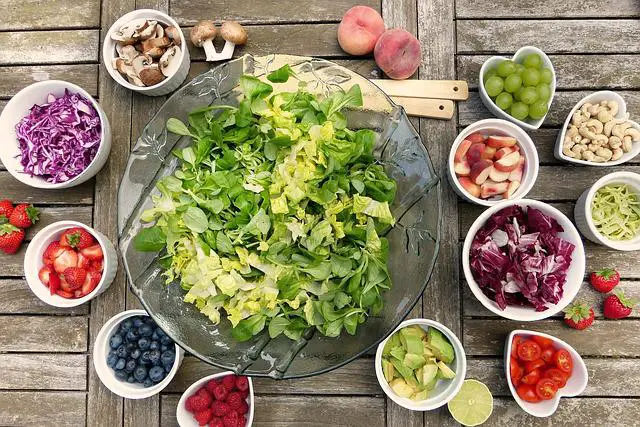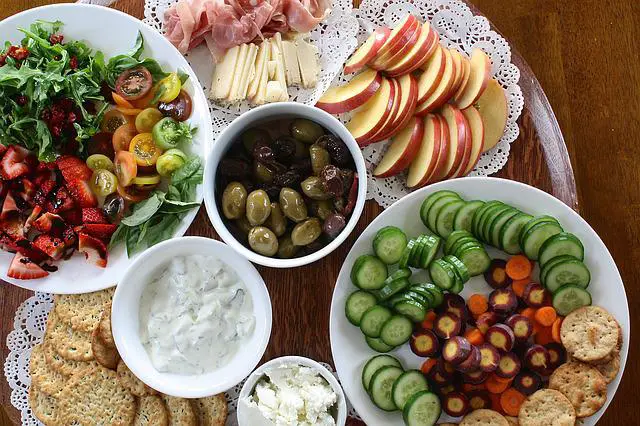
The distinction between fruit and vegetables is not always obvious. Peach is considered a fruit all the time, while a carrot is indisputably a vegetable.
However, there’s a big overlap in the Venn diagram comparing these two categories of products.
It stems from the fact that when you’re a gardener vs. a chef, “fruit” and “vegetable” are defined differently by the European Food Information Council (EUFIC).
Read also: What Happens if You Swallow Gum
What’s really the difference between fruit and vegetables?
When it comes to fruits and vegetables, there is a lot of confusion about what counts as which. After all, both fruits and vegetables are parts of plants that are edible. The difference lies in:
Contain seeds
Fruits contain seeds whereas vegetables do not. For example, watermelon has seeds on the inside that you need to remove before eating it, while cucumbers do not have any seeds.
This difference is generally due to the fact that fruits are the reproductive organs of plants, containing the seeds that will grow into new plants.
Vegetables, on the other hand, are typically the edible parts of plants that are not used for reproduction.
How they grow
Fruits grow on trees or bushes and are the mature ovaries of flowering plants. Once the flowers have been pollinated, the ovaries begin to swell as the fruits develop.
Vegetables are all other plant parts, such as leaves, stems, roots, flowers, bulbs and tubers. Most vegetables need to be planted in soil in order to grow, although some, such as mushrooms, can be grown indoors.
When they are harvested
Fruits are generally harvested when they are ripe and ready to eat. This means that they have reached their maximum sugar content and flavor.
Vegetables, on the other hand, can be harvested at different stages of maturity, depending on the desired use.
For example, some vegetables, such as peas and beans, can be eaten while they are still young and tender, while others, such as carrots and potatoes, are best when they have had a chance to mature fully.
What they are used for
Fruits are often eaten raw, while vegetables are usually cooked before eating. However, there are exceptions to this rule – some fruits, such as bananas and avocados, are often eaten cooked, while some vegetables, such as cabbage and spinach, can be eaten raw.
Both fruits and vegetables provide essential nutrients that the body needs to function properly.
In addition to being a good source of vitamins and minerals, fruits and vegetables are also a good source of fiber.
Read also: Can You Live Without a Kidney

What vegetable is actually a fruit?
Tomatoes are a type of fruit that is often mistaken for a vegetable. While tomatoes are technically classified as fruits because they contain seeds and grow on vines, like other fruits.
They are often used in savory dishes and are therefore more commonly associated with vegetables. Tomatoes are native to South America and were brought to Europe in the 16th century by Spanish explorers.
Today, tomatoes are one of the most popular fruits in the world, and they are used in a wide variety of cuisines. In addition to being eaten raw, tomatoes can be cooked, stewed, or made into sauce.
No matter how they are prepared, tomatoes add a delicious burst of flavor to any dish.
So, although there is some overlap between fruits and vegetables, they are still two distinct categories of products. The next time you’re at the grocery store, take a closer look at the fruits and vegetables to see which category they belong to.
Read also: What Will Happen To Your Body When You Drink Alcohol
Conclusion
Fruits are the reproductive organs of plants that contain seeds, while vegetables are the edible parts of plants that do not contain seeds. Fruits are generally eaten raw, while vegetables are usually cooked before eating.
Both fruits and vegetables provide essential nutrients that the body needs to function properly.
Fruits and vegetables are both important parts of a healthy diet. Fruits provide the body with essential nutrients, while vegetables help to protect against disease.
Both fruits and vegetables are low in calories and fat, and they contain no cholesterol. They are also a good source of fiber.
However, it is important to eat a variety of both fruits and vegetables to get the most benefit. Including a wide variety of fruits and vegetables in your diet will help you to stay healthy and prevent diseases.



